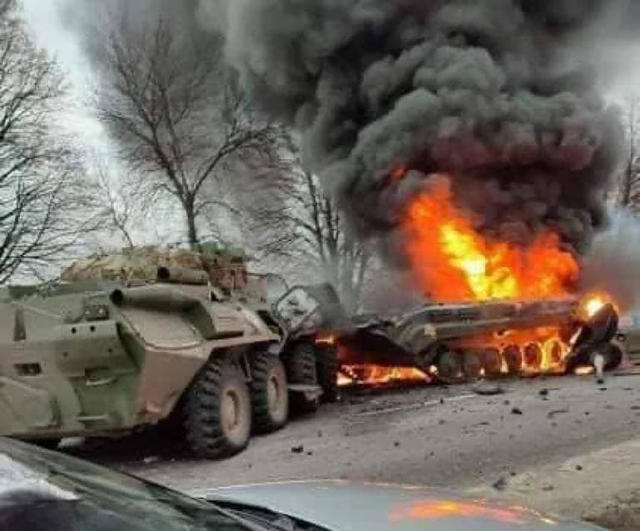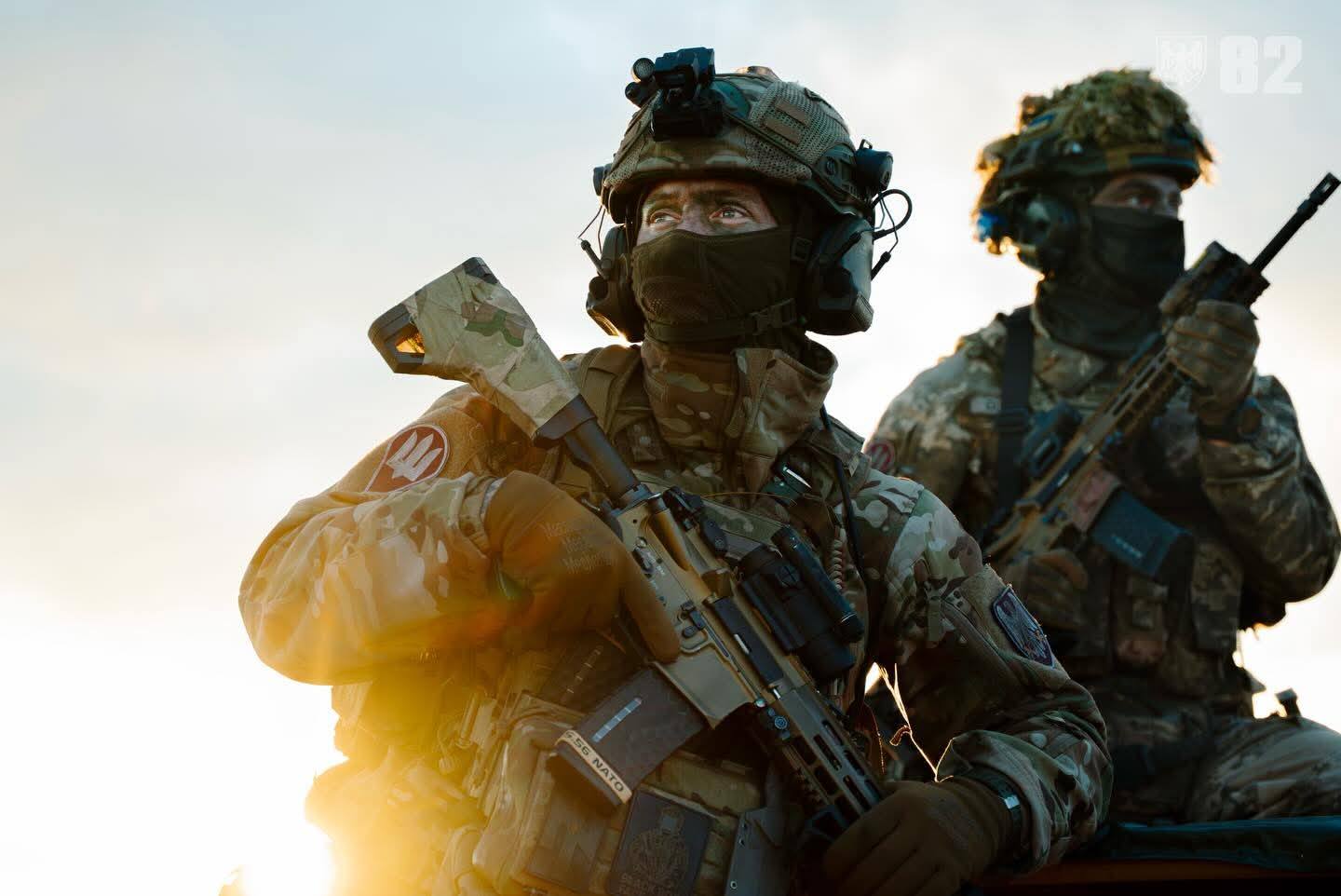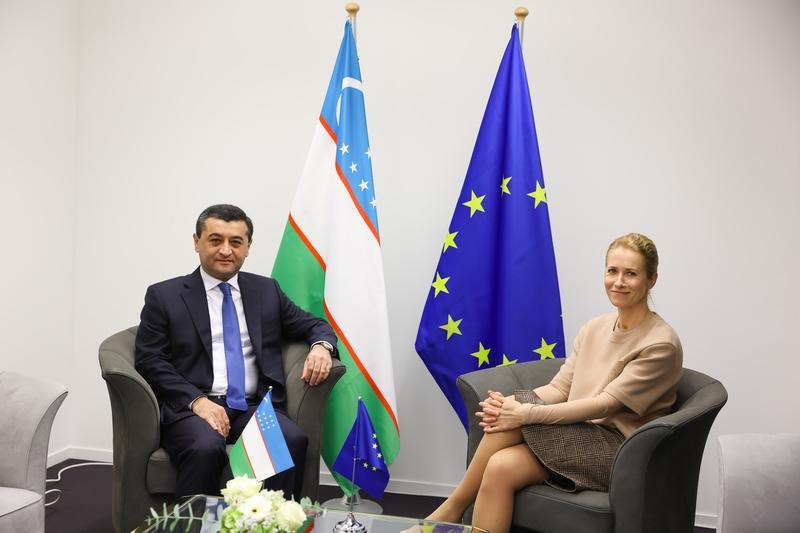
Russian Forces Claim Control of Land Corridor to Occupied Crimea, but Face Vehement Ukrainian Resistance
Russian Forces Claim Control of Land Corridor to Occupied Crimea, but Face Vehement Ukrainian Resistance
Russia’s failed attempts to seize major Ukrainian cities continue to attract attention (see EDM, March 16), but Moscow has gone a long way toward achieving one of its key war aims elsewhere. In the southeastern portion of Ukraine, it has taken control of a land corridor between the Russian Federation and Russian-occupied Crimea, along the shore of the Sea of Azov, something Russian officials say Moscow has no intention of giving up even when combat operations end. This move is geopolitically important for three reasons. First, it establishes a land bridge to Crimea that will significantly expand its supply route to the peninsula via the Kerch Strait Bridge, which Russia built years earlier. Second, it means that Moscow can better ensure an adequate water supply to Crimea because it has now seized some of the Ukrainian reservoirs and canals that had supplied Crimea before the Russian occupation. And third, it means that the Sea of Azov is, for the time being at least, entirely surrounded by Russian-controlled territory. This allows Moscow to claim that body of water entirely within Russia and, therefore, not subject to international law, as it had been when Ukraine shared part of the coastline. And that in turn means the Russian navy will be able to move more of its Caspian Flotilla assets to the Sea of Azov for use in the Black Sea or further afield, rather than shifting them back and forth via the Volga–Don Canal in times of crisis, as it had done repeatedly in recent years.
In recent days, both Crimean and Moscow officials have declared that Russian forces have established control over what they are now explicitly referring to as “a corridor” between Russia-proper and occupied Crimea, along the shores of the Sea of Azov (NTV, Topcor.ru, March 14; RIA Novosti, March 15). It is certainly the case that they have large forces in place in this sector, drawn from both Moscow-backed Donbas irregulars and the Russian army. But an ethnic-Ukrainian police officer on the ground there, who is now working for the occupiers, conceded to a journalist that the situation remains unsettled: his men can only move about in groups of two or more, rather than individually, and a small Ukrainian partisan movement has begun to operate there (URA.RU, March 11). Until the area is pacified, Russian control will remain contested; and neither Moscow nor the Russian authorities in Crimea or the Russian navy will be able to take full advantage of the changes they seek.
When Putin carried out his annexation of Ukraine’s Crimea in 2014, many wondered whether he could hold it given Crimea’s lack of direct land connection with the Russian Federation; some speculated that he would be forced to launch a new offensive to occupy the land along the Sea of Azov to ensure complete control of the peninsula. Such worries were further exacerbated by the chronic droughts Crimea has experienced in the years since—a water shortage reflecting not only climate change but also the fact that Kyiv cut off the water supply from the north that had been critical for the people, agriculture and industry on the peninsula (see Jamestown.org, January 21, 2022; see EDM, February 26, 2020 and August 12, 2020). But Russian military operations north from Crimea significantly relieved the situation after its troops took the Kakhovka hydroelectric dam, which creates the large reservoir that feeds the North Crimea Canal (Hydro Review, February 25). Water from the Dnieper River reportedly again began flowing to Crimea starting on February 26, after soldiers blew up the dam Ukraine had built to block the water supply to the Russian-occupied peninsula (RIA Novosti, February 26). Apparently, Ukrainian forces tried unsuccessfully to wrest back control of the Kakhovka dam on March 16 (Pravda.ru, March 16)
Perhaps equally important to Moscow: Russia’s (for now) success in establishing the land bridge to Crimea also means that the Sea of Azov is surrounded by Russian or Russian-occupied territory, allowing the Russian government to argue that this body of water and any shipping on it is no longer subject to international maritime law but rather is entirely under the dominion of the Russian authorities. Over the last eight years, Moscow has asserted claims in this direction (see EDM, January 23, 2020, January 14, 2021, April 20, 2021); but its de facto control of the coastal land corridor between Russia proper and Russian-occupied Crimea will give its assertions in this regard more weight, even if the international community properly regards them as illegitimate.
If Moscow can make its occupation stick either de facto or, worse, de jure, it will be in a position to better ensure its continuing control of Crimea as well as to impose its will on all foreign shipping—military and civilian—on that body of water. Ukraine will thus lose to Russia not only the coastal corridor but a key supply route to much of southeastern Ukraine, creating economic and security conditions that Moscow can count on to exploit regardless of any deal to end the war. Thus, the Sea of Azov coastline should not be dismissed as a sideshow. It is likely to be critical to Russian plans now and for possible future Russian aggression to the west and south.
But there is an additional strategic element to this corridor, one that must not be ignored by Ukraine or those who support Ukrainian independence and regional security. If Moscow is able to retain its hold over the Crimea–Russia coastal land bridge, it will have unrestricted control of the entire Sea of Azov as far as warships are concerned. It will certainly continue to exclude Western vessels, but it almost certainly will now introduce more ships of its own there, to potentially use in the Black Sea against Turkey and its North Atlantic Treaty Organization (NATO) allies. Heretofore, Russia has been limited in its ability to do that, and it has rotated Caspian Flotilla ships in and out as needed. Now, however, some of those vessels are likely to be permanently rebased in the Sea of Azov—surely a welcome development for Moscow given the difficulties it has had with dredging the Volga–Don Canal and the challenges it will face if it tries to dig a new canal across the North Caucasus (see EDM, March 26, 2019).

